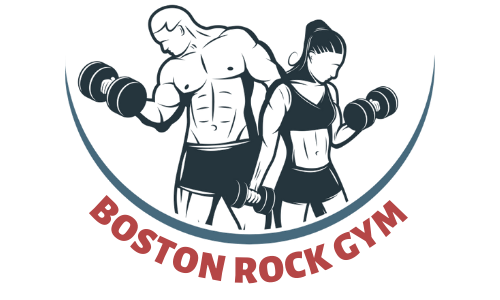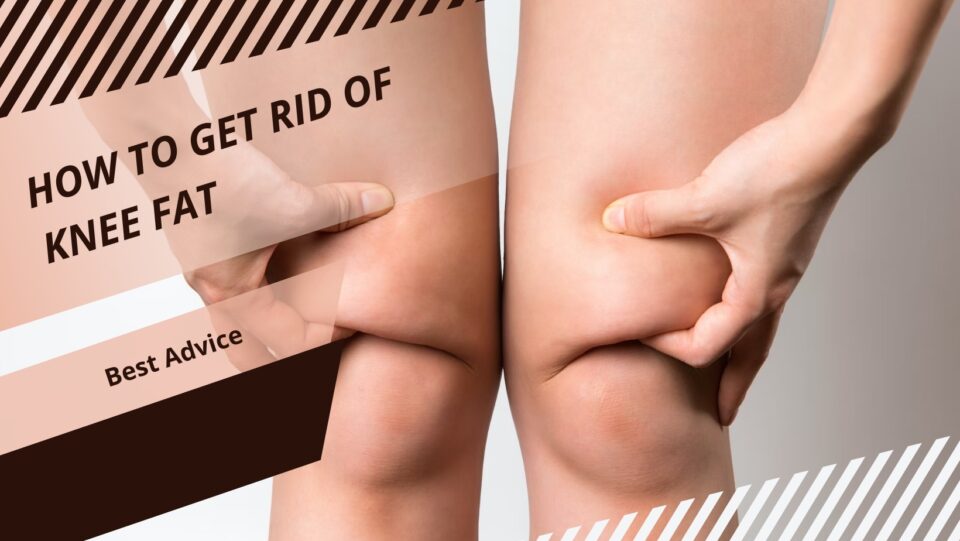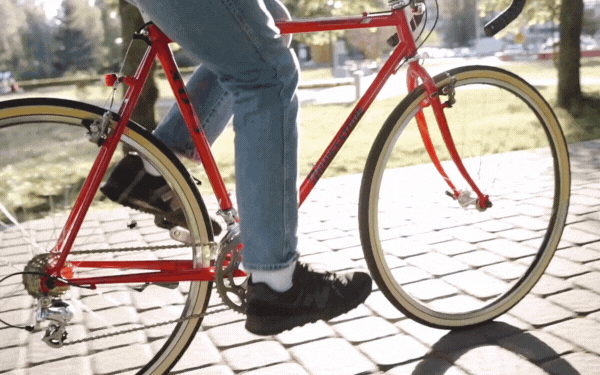Your knees’ appearance can be impacted by a variety of causes. For example, the look of the knee region can be impacted by excess weight, sagging skin brought on by aging or recent weight reduction, large quad muscles giving the area above your knees the appearance of being bigger, and diminished muscle tone brought on by inactivity or injury.
While there isn’t a single strategy that will specifically reduce fat in the knees, there are several activities that can help your legs perform better and tone up, which will aid your knees as well.
To save you from wasting a ton of time trying to find answers and doing the research on your own, we provide you with all the info in one summarized guide! You can find several useful tips on how to get rid of knee fat below.
Contents
Top 4 Tips
1. Dieting

One way to get more sculpted legs is to lose weight, which may also help to avoid or treat knee problems. This involves consuming nutritious food, as well as engaging in workouts that include cardio and strength training.
You can contribute to general body slimming by lowering your body fat percentage. There isn’t a single activity that can specifically target body fat in the knee region or anywhere else.
That is why you should have patience and combine a healthy diet with other activities and tips we list in this article for optimal results. Keep in mind that maintaining a healthy diet won’t only help you in losing knee fat, but it will also be extremely beneficial for your overall health and stress reduction. There is no downside to having a healthy diet.
2. Running/Jogging
Jogging and running are both excellent ways to burn calories. In addition, they target your legs somewhat more than walking does, which may strengthen the region in front of your knees.
Running is an excellent approach for beginners to increase their stamina and prepare their bodies for more demanding workouts. Cardio is a terrific technique to tone the body and increase general stamina even though it may not help you gain muscles.
Similar to other workouts, maintaining a constant speed when running is the most efficient technique. Keep in mind that maintaining a steady, modest jog is preferable to varying between jogging and walking. Some argue that long-distance races may not be as effective in burning fat as short bursts of running, though. Before you begin, see your physician or personal trainer to learn certain knee stretches that can help you warm up and prevent injuries while running, to stay on the safe side.
3. Biking
While biking is regarded as a cardiovascular activity that is good for your heart and general endurance, it also offers excellent toning potential due to its emphasis on using your legs. This includes your calves, thighs, and quads, which will also tone the area around your knees. A low-impact alternative to running is biking, particularly if you have any knee discomfort or a history of leg injuries.
You may ride a bike in one of two ways to get the most toning benefits: either as an interval or long-distance workout. The former focuses on lengthy stretches of constant speed, whereas the latter emphasizes quick and frequent intervals. You may use a stationary bike at the gym or a bike outside.
Start off by riding the bicycle at a steady pace. If you alternate between speeds frequently, you won’t get the desired results. Keep in mind that starting slowly and focusing on consistency is preferable to starting rapidly and wildly changing speeds.
Once you have established the average speed that is most comfortable for you, consider increasing the pedal resistance to strengthen your knees. To put more pressure on the knees, try standing on the pedals after that. Try doing this workout once a day for an hour, and you’ll start seeing benefits right away!
4. Exercising
Other than biking and jogging, there is a number of exercises that are excellent for losing knee fat. Take a look at the list below to find out what they are and how to do them:
Lunges
Lunges target your quadriceps, which are the front muscles of your legs. Over time, your entire leg, including the glutes and the knee region, might become tighter as a result of strengthening and toning these muscles. In a classic lunge, you step one leg forward at a 90-degree angle while maintaining a straight upper body. Once you’ve completed 10 reps on each leg, you can switch legs. You may up the reps over time, or for more resistance, grasp a pair of dumbbells. Here are the steps you should follow to perform a lunge:
- Legs should be hip-width apart when you stand upright
- Move your weight so that your left leg’s heel strikes the ground first as you advance with it
- Reduce your body weight until your left shin and thigh are vertical and parallel to the floor
- To go back to where you were, put weight on your left heel
- Repeat on the other side
Squats
Squats are a fantastic workout to help tone your legs since they also work the quads. As an added benefit, squats are good for firming up your glutes as well. Start with five squats each day to increase your stamina. Try performing more than ten to fifteen squats every day for optimum outcomes.
Squats with increased weight, such as goblet squats with kettlebells, can be done when you’re ready. Keep in mind that every person’s body is unique, so find the level that works for you! To do a squat, follow these steps:
- Place your feet at least shoulder-width apart and lower your body toward the floor as if you were trying to sit in a chair
- As your legs and glutes grow stronger, increase the number of squats you perform in a set
Jumping Rope
Another powerful calorie burner that may tone and strengthen your legs and your heart is the jumping rope. The most important factor in successfully performing jumping rope is the technique, not speed. To avoid hurting your joints upon landing, focus on jumping having your knees slightly bent. Additionally, pick rubber flooring over concrete or asphalt.
Jumping rope has a significant impact, thus exercising for only a short period of time at a time is optimal for your knee joints. This exercise can be done as a warm-up before lifting weights or performing other strength-training exercises. Here are the steps you should follow:
- Keep your hands at hip height while you hold the rope
- Swing the rope with your wrists rotated, then jump
- One foot at a time, rotating between feet, jumping with both feet at once—these are all jumping variations
- Continue until the set is finished
Knee Extensions
One of the greatest workouts for knee fat is terminal knee extensions. To complete it, you will need a resistance band. This is how to do it:
- At knee level, wrap the band around a solid pole or beam
- After that, slip your leg inside the band’s loop and take a 12-inch step back to tighten the band
- In order to bend the front knee—the one with the band around it—raise your heel
- From here, gradually start straightening the knee against the resistance of the band. The muscles should begin to contract
- Do ten times each, then switch to the opposite leg
Step-Ups
The weighted step-up workout is great for the lower body, and using dumbbells makes the muscles you’re targeting work harder. This exercise may be altered to create a secure and efficient workout for people of all fitness levels and can be incorporated into almost any exercise program intended to increase upper leg and gluteal strength. This is how you do a step-up:
- Step on a box or a bench
- As you stand up, straighten your right leg by pressing with the heel of your right foot
- Bring your left foot and right foot together at the peak of the step
- Bend your right knee and stride back with your left foot
- Raise the right foot till it is level with the left foot
Conclusion
Whatever alternatives you use to reduce knee fat, it’s vital to remember that losing body fat from any place of your body requires patience and perseverance. The knees provide a much greater challenge unless you’re already quite active because sitting down at work or for leisure might raise your chances of gaining extra weight there.
You can get rid of extra body fat at home or in the gym on your own with proper exercise and a healthy lifestyle. You should be aware that this may take some time as fat reduction is not the goal. The extra weight in your knees will diminish as your body’s general fat content does.
Additionally, you’ll lessen your chance of developing arthritis and other joint conditions linked to inflammation.






